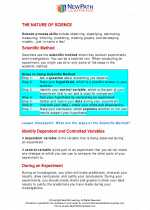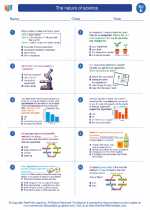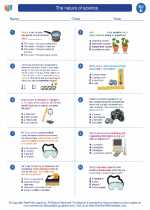Circuit Study Guide
A circuit is a closed loop through which an electric current flows. It consists of various components such as wires, batteries, switches, resistors, capacitors, and more. Understanding circuits is crucial in the study of electricity and electronics.
Types of Circuits
There are two main types of circuits: series circuits and parallel circuits.
- Series circuit: In a series circuit, the components are arranged in a single loop. The current has only one path to flow through all the components. If one component fails, the entire circuit is disrupted.
- Parallel circuit: In a parallel circuit, the components are connected across multiple branches. Each component has its own path for the current to flow. If one component fails, the rest of the circuit continues to function.
Key Components of a Circuit
Understanding the following components is essential for comprehending how circuits work:
- Battery: The power source that provides the initial voltage to move the electrons in the circuit.
- Wires: Conductive pathways that allow the flow of electric current.
- Switches: Devices used to open or close the circuit, controlling the flow of current.
- Resistors: Components that limit the flow of current in a circuit.
- Capacitors: Devices that store and release electrical energy in a circuit.
How Circuits Work
When a circuit is connected and the switch is closed, the electric current flows from the positive terminal of the battery, through the wires and components, and back to the negative terminal of the battery. In a series circuit, the current is the same at all points, while in a parallel circuit, the current splits and flows through multiple paths.
Understanding Circuit Diagrams
Circuit diagrams use symbols to represent the components and connections in a circuit. Learning to interpret these diagrams is crucial for understanding the design and function of circuits.
Study Tips
Here are some tips for studying circuits:
- Practice drawing and interpreting circuit diagrams.
- Experiment with building simple circuits using a battery, wires, and a light bulb to see how different components affect the flow of electricity.
- Understand the differences between series and parallel circuits and how they impact the flow of current.
- Use online simulations or circuit-building kits to visualize and test different circuit configurations.
[Circuit] Related Worksheets and Study Guides:
.◂Science Worksheets and Study Guides Fifth Grade. The nature of science

 Worksheet/Answer key
Worksheet/Answer key
 Worksheet/Answer key
Worksheet/Answer key
 Worksheet/Answer key
Worksheet/Answer key
